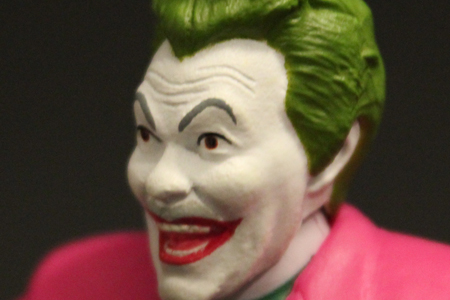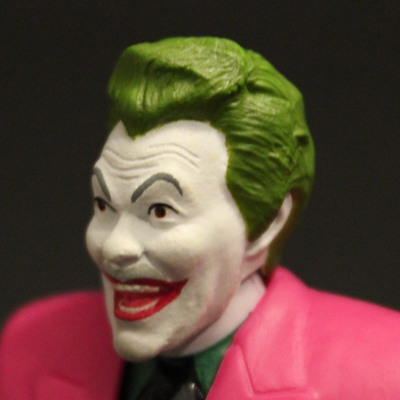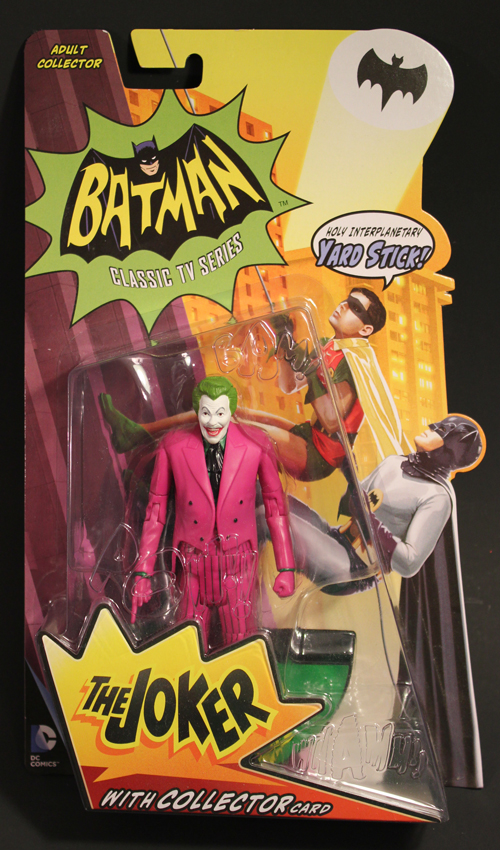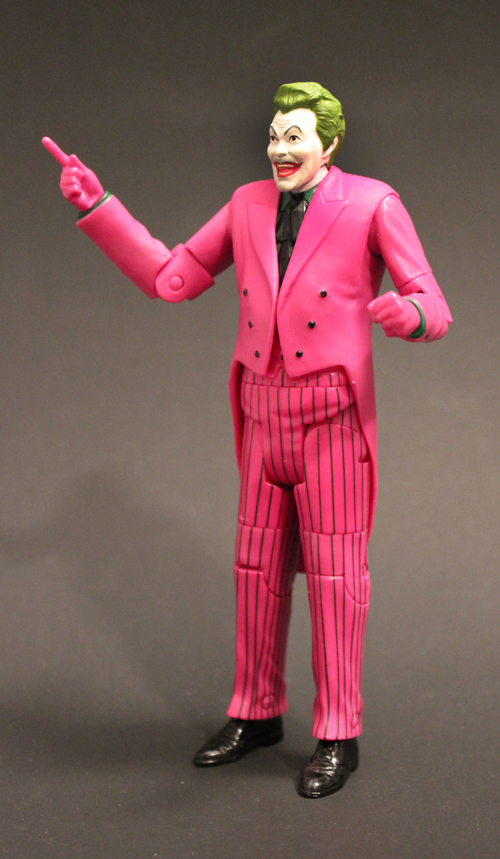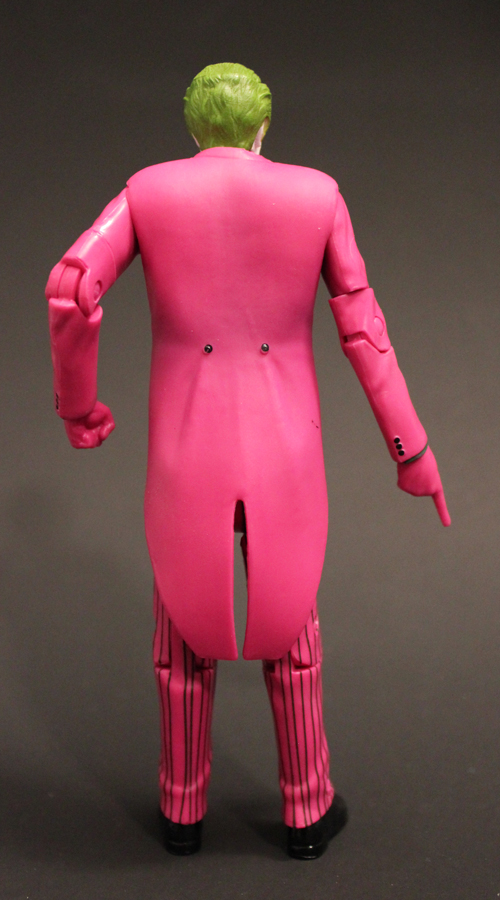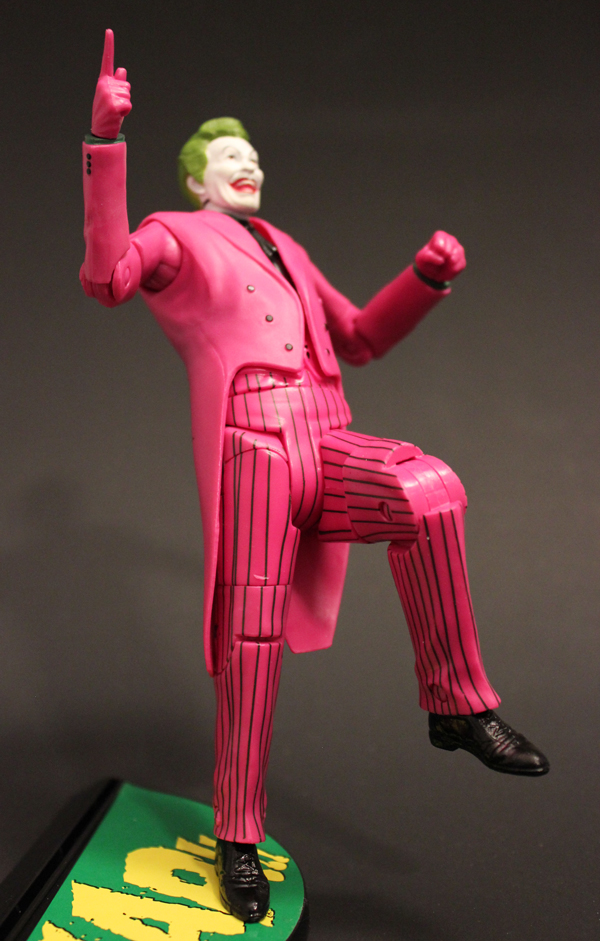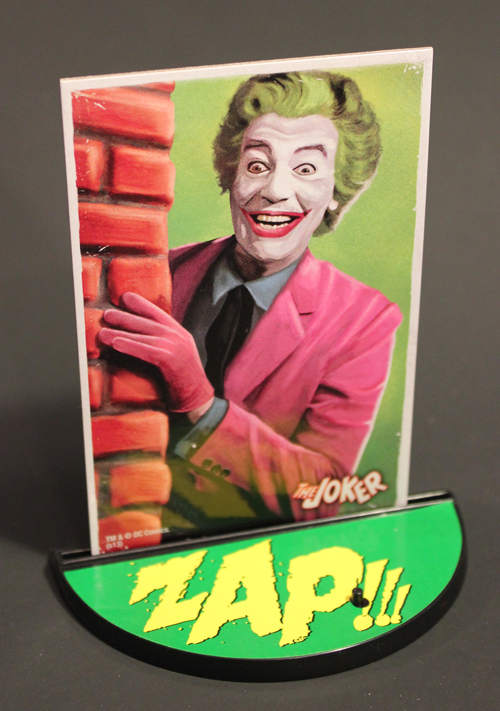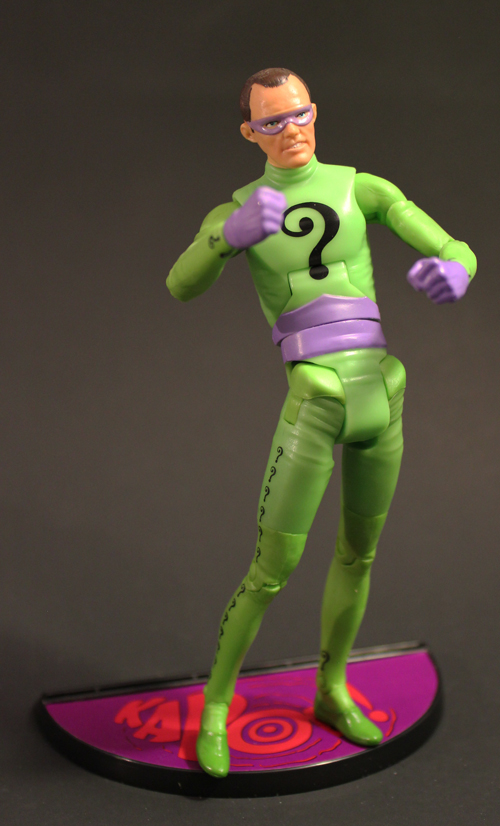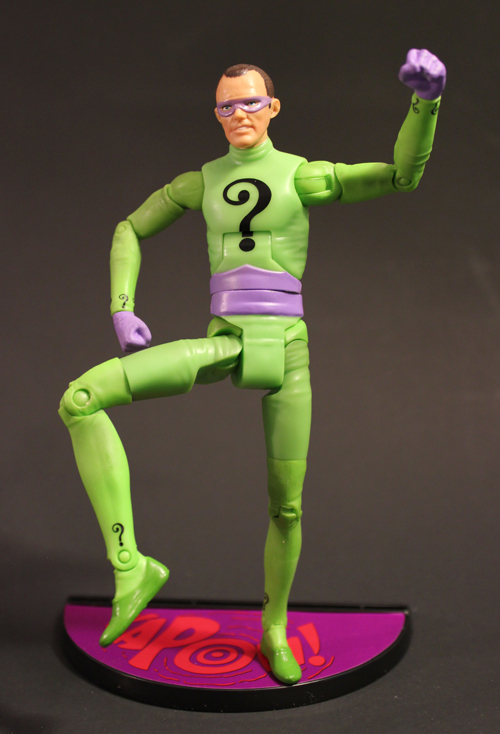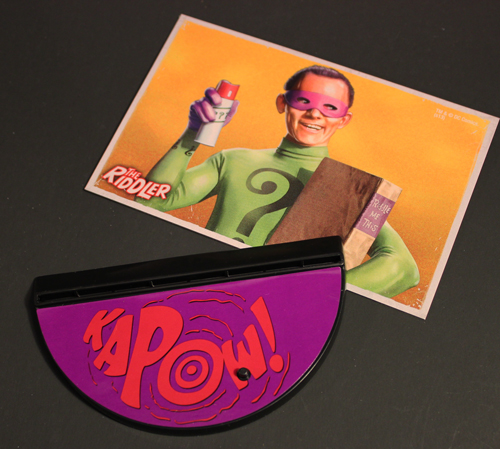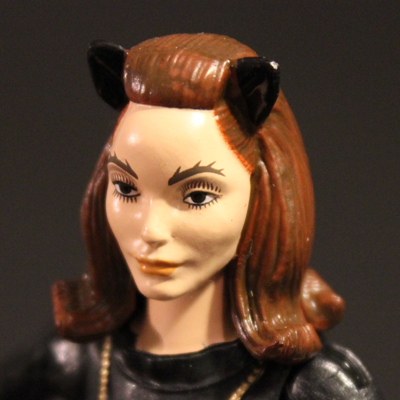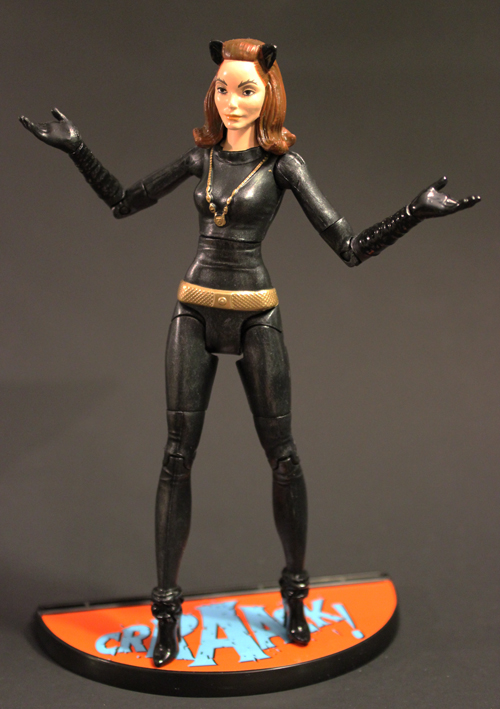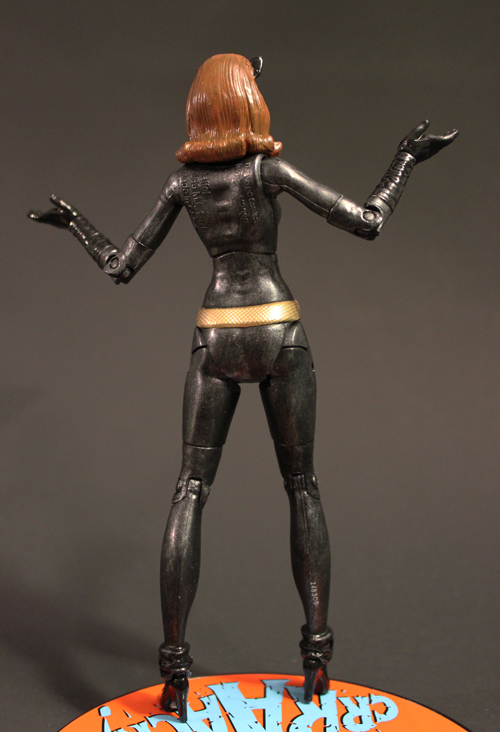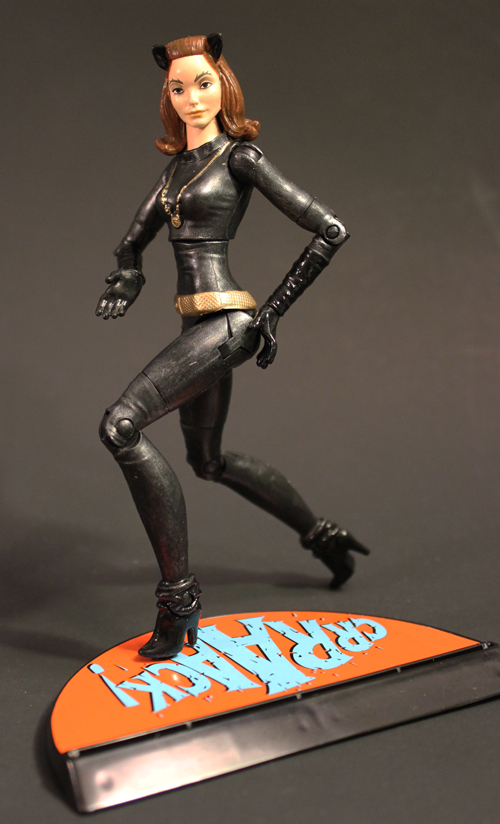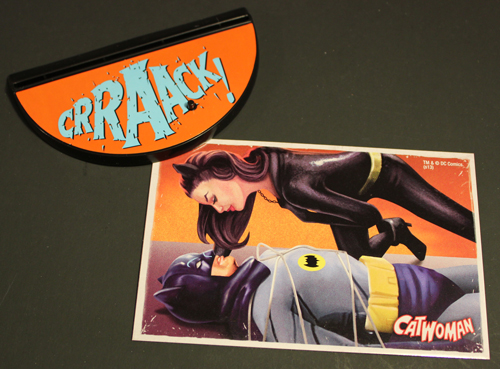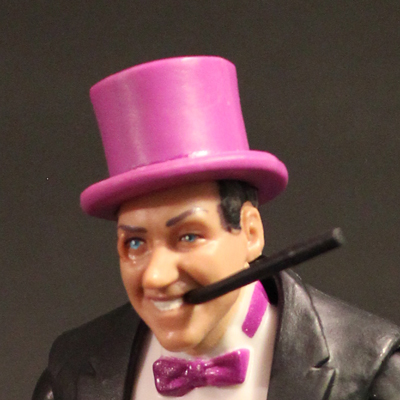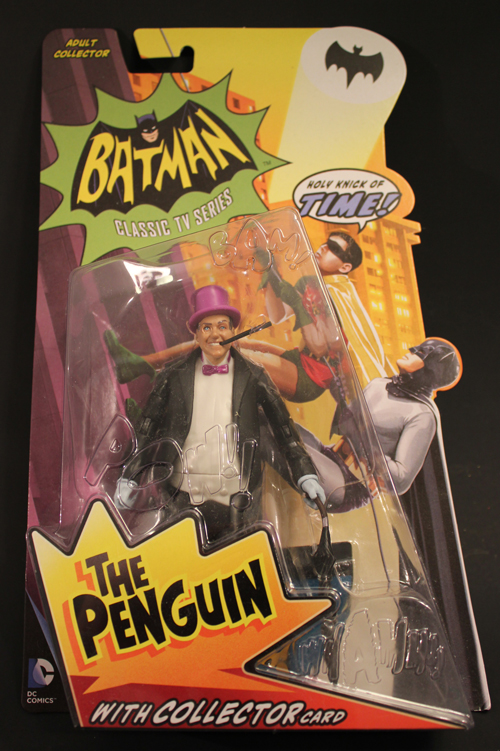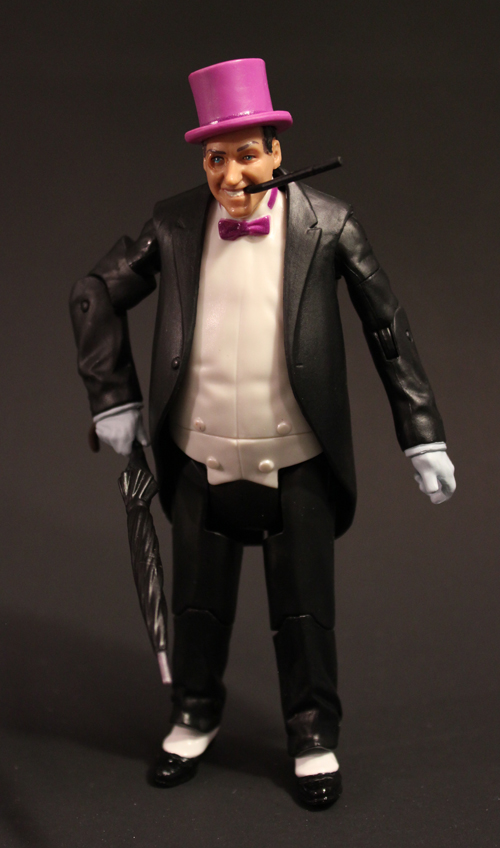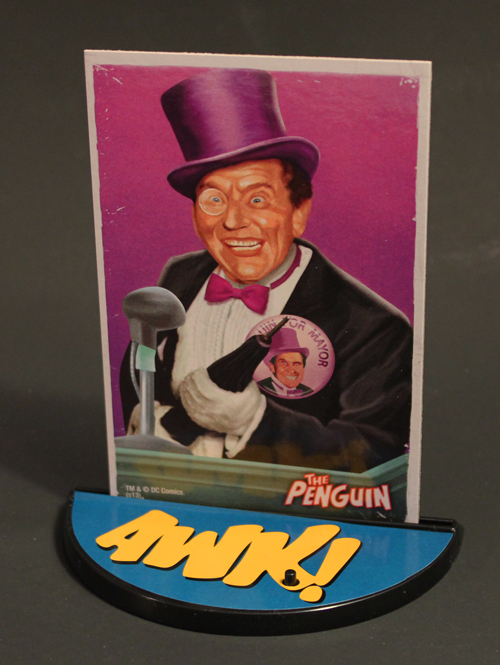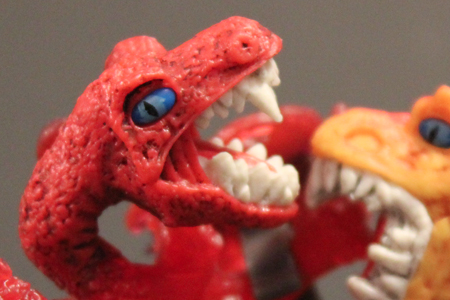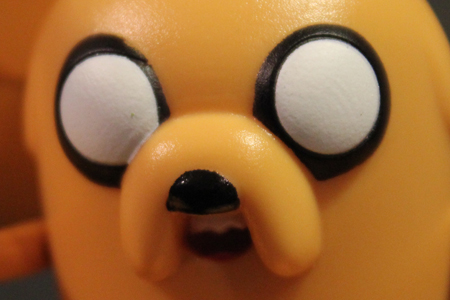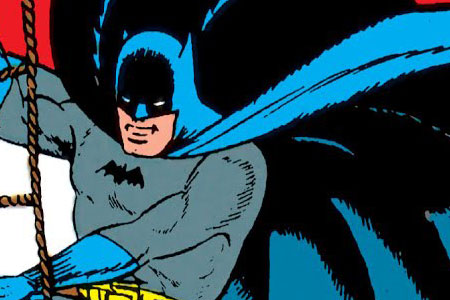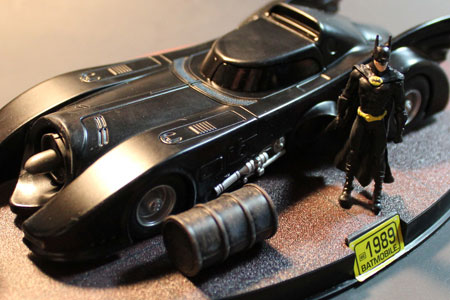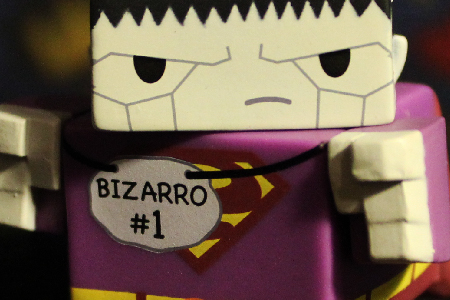
Every great hero is defined by his villains. In those precious and rare situations in which a hero is written really well, each bad guy that offers a challenge our hero represents an aspect of the hero themselves; a symbolic battle against what the hero might become should they allow their power they wield to get the better of them. Because Batman is probably one of the most clinically psychotic heroes written today, his gallery of rogues is especially interesting. Sure, Superman fights planet-conquering, super-strong aliens, and Iron Man fights a lot of guys in technologically absurd metal suits… but Batman regularly fights the most deeply psychopathic villains around. He’s the only hero who keeps the local asylum in business.
The Joker, Batman’s number one antagonist, is the exact opposite of Batman in appearance and mannerisms, but they both nurture the same insanity that causes grown men to stalk the streets in costumes wielding themed gadgets. Catwoman is an answer to Batman’s stealth and cunning. The Riddler is Batman’s genius; a villain who makes complex puzzles for the world’s greatest detective to solve. The Penguin matches Batman’s wealth, and the powers that having a whole wad of cash can bring, like building the aforementioned themed weapons. Bruce Wayne could very, very easily be the guy dressing up like an insane clown, breaking and entering, dropping Gordian puzzles for the clumsy Gotham PD, or using his fat stacks of Wayne Enterprises dough to run a sprawling criminal empire – but he doesn’t. And that’s what makes him Batman.
Of course, many of these deeper themes didn’t really consciously exist in the glorious Silver Age of comics, when bizarre science fiction took over where street crime stories left off and Batman still smiled a lot. An even more exaggerated version of the Silver Age is reflected in the 1960s Batman TV show, where most of Batman’s core bad guys remained, and a many ridiculous ones were added. After a prolonged licensing nightmare, Mattel has made the show’s four main baddies into long-awaited 6″ action figures. I maintain geeky hope that they’ll bust out a Batgirl, two more Catwomen, a Mr. Freeze, and just for the absurdity of it, an Egghead and a King Tut. These follow Mattel’s initial release of Adam West and Burt Ward as Batman and Robin.
These figures continue to vent the pent-up geek energy that’s been simmering for decades, and it’s because of this excitement that they really need to be exceptional. You don’t want to lose anything in the translation between the icon which has been psychically impressed upon geeks and the talisman they actually get to hold. The idea and the physical object need to carry the same relevance and importance, and it’s an unfortunate situation when a few syllables of this message are slurred along the way.
Cesar Romero’s Joker is the necessary counterpoint to West’s Batman, and ’60s Batman was a figure that Mattel did exceptionally well. And while it’s true that all art is approximation, some things approximate better than others. There’s a definite geek scale than hits a low point at Viggo Mortensen’s Aragorn action figure by ToyBiz (which he refused to offer his likeness to) and anything produced by Hot Toys, which are so realistic that they’re unnerving. And then there are the sloppy, barely-humanoid faces of dollar store toys which are so hideous, and so clearly painted by the indifferent and underpaid, that they carry their own charm and importance.
Score a few points here for giving The Joker a grey upper lip: an approximation of the fact that Romero refused to shave his signature mustache while acting as The Joker, necessitating that it be painted over with thick, white facepaint. That diva noise would not fly today for anyone lesser than your average Brad Pitt, but in the ’60s, on a show that wasn’t even remotely serious, painting over facial hair was acceptable. This is the kaiju version of The Joker; a guy in a costume which doesn’t fit perfectly, and is far from the idealized version of the character he was playing.
Romero’s Joker figure doesn’t feel like it has the same presence as West’s Batman. Maybe it’s in the strange proportions, or an imperfect face sculpt; maybe it’s that The Joker is a kinetic character, and this guy has Frankenstein shoulderpads and blocky joints. It doesn’t achieve the same iconic feeling as the rest of the line, and it’s even less fortunate that it’s such a decline in quality from the original photos of the figure. When Mattel is selling these as $20+ “adult collectibles”, there’s a standard that needs to be observed that separates these from the acceptable and charming level of “being a toy”. This doesn’t do that thing. You don’t spend $20 for “good enough”.
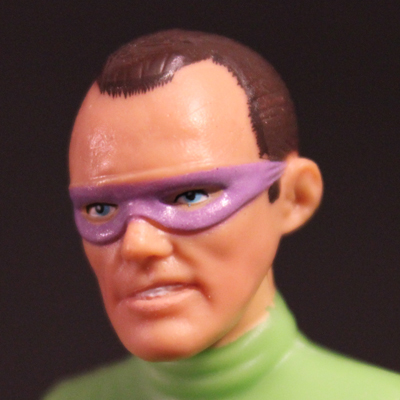
Fortunately, Frank Gorshin’s Riddler kicks all kinds of ass, and the Julie Newmar Catwoman and the Burgess Meredith Penguin are pretty okay. They all just look like people who were wedged into crazy costumes, for better or worse, and made the best of an infectiously weird thing. Sure, Catwoman’s eyelashes could be painted evenly, and The Penguin’s cigarette might benefit from being a bit more proportionate (or left out entirely), but maybe it’s the slight awkwardness that makes these fun.
Seriously, though – it looks like he’s halfway through eating a car axle. This is not a thing that should be in a mouth.
I’m not sure if these quite reach the $20 threshold for being truly worth the cash. The TV series featured so many outlandish, stylish and surrealist props and accessories that it’s really just a waste that they’re left out here, as these are awesomely ripe for pack-ins. A Joker without his toys is kinda just some dude at a comic convention, and an ill-prepared dude at that. Even the most half-assed cosplayer has a plastic gun with a little flag that says ‘BANG!’ glued to the end. For the love of Christ, Joker has a briefcase full of jumping beans, and something called a “two-way hotdog transmitter”, which disappointingly did not actually transmit hotdogs. Where are these things? If there are “adult collectibles”, where are the miniature prop replicas, Mattel?
In the realm of mindful collecting, there’s a bit of remorse here. While no Joker collection would really be complete without this weirdo, and if you’re one of those weird and nonexistent people whose favorite bad guy is the Penguin, these are better buys on clearance than the $20 asking price. Who really looks at a fat guy with a bird fetish and a lounge and says, “Hey, I relate to that. I aspire to this lifestyle and these clothing choices. Oswald Cobblepot is one of comics’ greatest villains.”
No one says that. But if you have good memories of a TV show that was cancelled 50 years ago, this one’s for you.
 C. David is a writer and artist living in the Hudson Valley, NY. He loves pinball, Wazmo Nariz, Rem Lezar, MODOK, pogs, Ultra Monsters, 80s horror, and is secretly very enthusiastic about everything else not listed here.
C. David is a writer and artist living in the Hudson Valley, NY. He loves pinball, Wazmo Nariz, Rem Lezar, MODOK, pogs, Ultra Monsters, 80s horror, and is secretly very enthusiastic about everything else not listed here.
